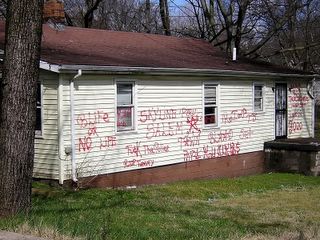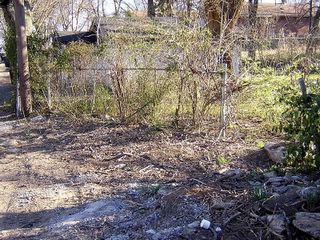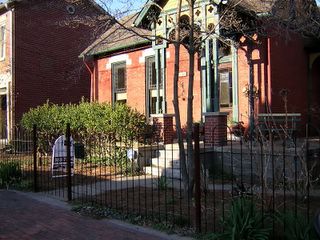“Carefree Highway” was one of Gordon Lightfoot’s hits in the 1970s. I must have been in junior high when it got the most airtime, but I remember misunderstanding his lyrics and changing the word "Carefree" to “Every.” On those rare occasions when I hear it now, I still catch myself wrongly intoning, “
Every Highway," which implies something other than what the song means.
In the song a highway is carefree because it provides the freedom to slip away from cares and the routines that tie us down, even if those things include the “good old faithful feelin’ we once knew.” Highways represented ironic flight for Gordon Lightfoot’s wayward generation.
They seem to represent something very different now. For those who authored of “The Plan of Nashville,” highways rip the fabric of neighborhoods. I do not disagree, but I do claim exceptions for some neighborhoods. From my point of view highways both slice up neighborhoods and provide barriers to keep other economic and political forces at bay.
I have
already made the latter argument about the inner loop of I-65 at Salemtown between 3rd Avenue and MetroCenter Blvd. To be specific, I-65 is a wall that acts as a disincentive for the out-of-state company, MetroCenter, to expand farther south than it already has. In
Part II, I mustered some numbers to show that MetroCenter owns a substantial amount of property in North Salemtown with no clear or evident inclination to support a neighborhood.
However, I want to be fair to MetroCenter, too. There are other dynamics in North Salemtown that could lead to residential development and business expansion compatible with neighborhood interests. If those other dynamics hold the day, then turning I-65 into an urban boulevard is not a bad idea. Those dynamics are contained in zoning details.
First, I will breakdown the numbers. The slice of North Salemtown severed by I-65, is itself bisected east to west by Clay Street, which runs from 3rd Avenue to 6th Avenue. There are no Salemtown residences to the north of Clay. The overwhelming majority of parcels are zoned “vacant commercial.”
Here is a rundown of the 30 parcels contained between Clay and Dominican:
- MetroCenter owns 19
- CB&J Properties, LLC owns 5
- Strickland Enterprises owns 3 (none other than the same company that makes Strickland's Surpeme Salads. I already took them to the weblog woodshed for making 5th Ave. and Jefferson Street look trashy).
- SouthCentral Bell owns 2
- One parcel is owned by an individual and his wife, but there is no residential structure on the property.
My first expression of fairness toward MetroCenter: of the 30 Salemtown parcels between Dominican and Clay, there are 3 zoned “vacant residential,” and they are all owned by MetroCenter. There might be a blessing-in-the-disguise-of-MetroCenter here, given their residential zone holdings. However, let’s hold that "'god-bless-you' in abeyance” (nod to
Seinfeld) for consideration at a later date and a later entry.
For now, I want to cross Clay Street to the south and focus there. All of the North Salemtown residential units sit in the block south of Clay, north of I-65, west of 3rd, east of 6th. That block is relatively small, measuring 120’x950’x150’x 1020’. MetroCenter owns 7 parcels there distributed across the block. Currently all of MetroCenter’s properties in the “residential block” are zoned “vacant residential” (in Zone terms, "R6," meaning single-family dwellings).
Time for the second expression of fairness to MetroCenter: if the zoning stays as is on each of those properties, then perhaps The Plan’s vision of controlled, mixed residential and commercial properties on MetroCenter parcels might come come true for North Salemtown. And if MetroCenter is community-minded to North Salemtown, then perhaps they might be community-minded toward the rest of Salemtown if the wall of I-65 ever came down as The Plan envisions.
However, I am not quite ready to extend benefit of the doubt to MetroCenter. A problem remains. It is the unknown factor in the equation: we will not know what MetroCenter’s intentions for these parcels are until they tell us. For all we know they may well intend to push legally to change the zoning.
If the planning commission and Metro Council stand firm on keeping residential zoning, then MetroCenter has 7 small and randomly placed properties “on the residential block” on which to build single family homes. In that light the Plan to take out the interstate might work along side a strongly organized Salemtown as a counterbalance just in case MetroCenter decides to start acting like a wise guy.
For the meantime we can look to I-65 as a figurative means of evading MetroCenter’s drive to acquire, while repeating Gordon Lightfoot’s refain, “Carefree Highway, let me slip away, slip away on you.”



















